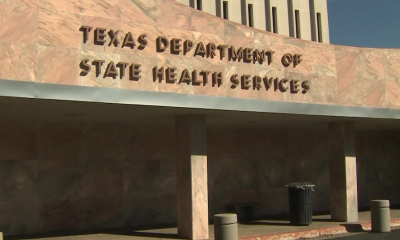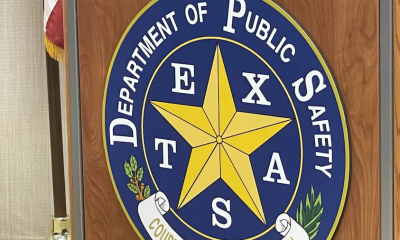Texas
Bastrop State Park employees continue to maintain park, serve public through pandemic
TEXAS – Nathan Reynolds says that while he knows how each day is going to start, he doesn’t know how each day will end.
Such is the life of a Texas state park employee, for whom daily tasks vary from infrastructure maintenance to passing out water to park visitors.
Reynolds, who said he is referred to as a maintenance supervisor or lead ranger, was one of the workers tasked with keeping Bastrop State Park, located 32 miles southeast of Austin in Bastrop County, up to standard during the early stages of the coronavirus pandemic.
Gov. Greg Abbott ordered all state parks closed on April 7, 2020, as the pandemic took hold in Texas. But state parks were also part of Abbott’s first phase of reopening the state less than two weeks later, part of an effort to restart the Texas economy.
Over the last 13 months, access has been restored and restrictions lifted. Most of Texas’ state parks reopened on April 20, 2020, with rules requiring face coverings and maintaining 6-feet of social distance. In May 2020, limited overnight camping returned.
This March, the Texas Parks and Wildlife Department began “a strategic and thoughtful process” of expanding capacity in state parks, and most of them, including Bastrop State Park, are now open for camping and day visits, unless they are otherwise closed for operational issues.
Mask wearing is strongly encouraged for park visitors, especially in indoor areas or areas where it might be difficult to socially distance, according to the Texas Parks and Wildlife Department.
“We’re excited to welcome more visitors to our parks,” Director of Texas State Parks Rodney Franklin said in March. “Prior to COVID-19, and throughout the last year, our parks have seen growing visitation and our teams are working hard to accommodate those who want to get outside and experience the incredible natural and cultural resources our parks have to offer.”
Clarity about the status of state parks didn’t exist in April 2020, when Reynolds began working at Bastrop State Park. Reynolds, who said he had previous parks and wildlife work experience working at fisheries, said he was looking for a job opportunity where he could hone different skills and build more of a career.
“I knew that there were a lot of leadership opportunities over here in state parks and that’s what the draw was,” Reynolds said.
When Reynolds arrived at Bastrop State Park, he said several members of the staff were out on COVID-19 leave, thinning the group of people tasked with maintaining the 6,600-acre state park.
“Who knows what was next, actually,” Reynolds said, recalling his thoughts at the time. He said park workers focused on “just being really flexible in everything that we were doing in trying to maintain the buildings and the infrastructure.”
Daily tasks at Bastrop State Park usually involve maintaining any number of the public structures, restrooms and cabins available to the public.
“We have a meeting hall, dorms, (a) refectory and all these things require daily housekeeping needs, especially when they’re occupied and turning them around,” Reynolds explained. “Our cabins, we have beds to make and linens to turn over, as well.”
Bastrop State Park earned National Historic Landmark status in 1997, in part due to the longstanding buildings and facilities in the park. According to the state, Bastrop State Park is among parks in Texas with buildings that were designed and constructed by a combination of the National Park Service, the Civilian Conservation Corps and the Texas Parks and Wildlife Department in the 1930s.
Reynolds said maintaining these historic buildings requires upkeep in a fashion similar to the period in which they were originally built, from the paint used to the roof shingles installed.
“I never really know how the day’s going to end, but I know how it’s going to start,” Reynolds said of his workday. “It’s been becoming easier for me, because I have a large, talented group of people that are now coming to work. So I’m just managing the output, so I give them a variety of projects to carry out throughout the day after those daily tasks of cleaning restrooms and such are done.”
Potential legislation to change state pensions
While Reynolds and his team begin some of those larger tasks – such as prepping the Bastrop State Park pool for summer use – work is underway at the Texas Capitol on legislation related to retirement plans for state employees like Reynolds.
Senate Bill 321, sponsored by Sen. Joan Huffman, was approved by the Senate in late April. The bill overhauls the pension plan for future state employees, creating a cash balance retirement plan for incoming state employees.
But the bill would also shore up billions of dollars in unfunded obligations owed to retirees, as Huffman amended the bill to authorize annual payments of $510 million through 2054 to pay down debt owed to Texas’ pension fund, which faces a $14.7 billion shortfall.
The payments would aim to stabilize the state’s Employees Retirement System plan for state workers, who haven’t received an across-the-board pay increase since 2015.
Discussion of state employee compensation comes as state park workers find themselves completing expected tasks like park maintenance while also dealing with challenges posed by the coronavirus pandemic and extreme weather season.
“The problems that we had were the numbers of rangers we had on staff. So we could only be open to the public so much,” Reynolds said when asked of challenges of starting his job during the coronavirus pandemic. “It was really just about the nuts and bolts of the infrastructure of the parks itself but, on top of that, we do have the other things that are going on like protecting the park from fire danger and those things
“It can be overwhelming,” he said, “but we’re surrounded by a great team, we have great leadership over here. We do morning meetings and communication is just key and all of that.”
Bastrop State Park operates as a complex with nearby Buescher State Park, a more than 1,000-acre state park located north of Smithville. Reynolds said there’s about six staff members overseeing Buescher State Park, and about 15 doing the same at Bastrop State Park, including office staff.
Ray Hymel, a legislative consultant for the Texas Public Employee Association, said the total package of benefits for a state employee is critical to their compensation.
“Even though they may not get paid as much as private sector folks, which is the case — they do not — the compensation can offset it to some degree,” Hymel said. “Especially, that part where you get a lifetime annuity and you get a lifetime of health insurance if you stay with the state.”
As of Wednesday afternoon, the bill was under consideration in the Texas House.
Visits increase at Bastrop State Park
As state parks have expanded their capacities, Reynolds said he’s noticed an increased number of people coming and enjoying the park, particularly with dogs in tow.
“It’s almost like before COVID, as far as the number of people coming in,” Reynolds said, noting that visitors have complied with the park’s mask request. “(A) lot more use on our trails for sure.”
With more visitors coming to Bastrop State Park, Reynolds said it’s important for people to visit the park’s website, tpwd.texas.gov/state-parks/bastrop, ahead of time to secure reservations and spots at the park. The site also lists precautions people should take when visiting.
“We also like for everyone to know to bring lots of water. We had a fire several years ago. We’re still in recovery from that, so the trees are small. They’re not providing as much shade,” Reynolds said, referencing the 2011 Bastrop County Complex Fire. “A person who’s not really planning ahead can get themselves in trouble.”
Despite the challenges that come with having a dynamic job with tasks that change daily, if not hourly, Reynolds said he loves working on cultural resource and natural resource projects, as well as those that highlight historic elements of the park, like its refectory.
“I have a number of volunteers and park hosts that help us maintain these facilities,” Reynolds said. “They learn skills as well, sort of on the job training, such as learning how to stack mortar inside of rock walls and rebuild those cracks, because we need them (the park’s historic buildings) to stay here for as long as possible.”










